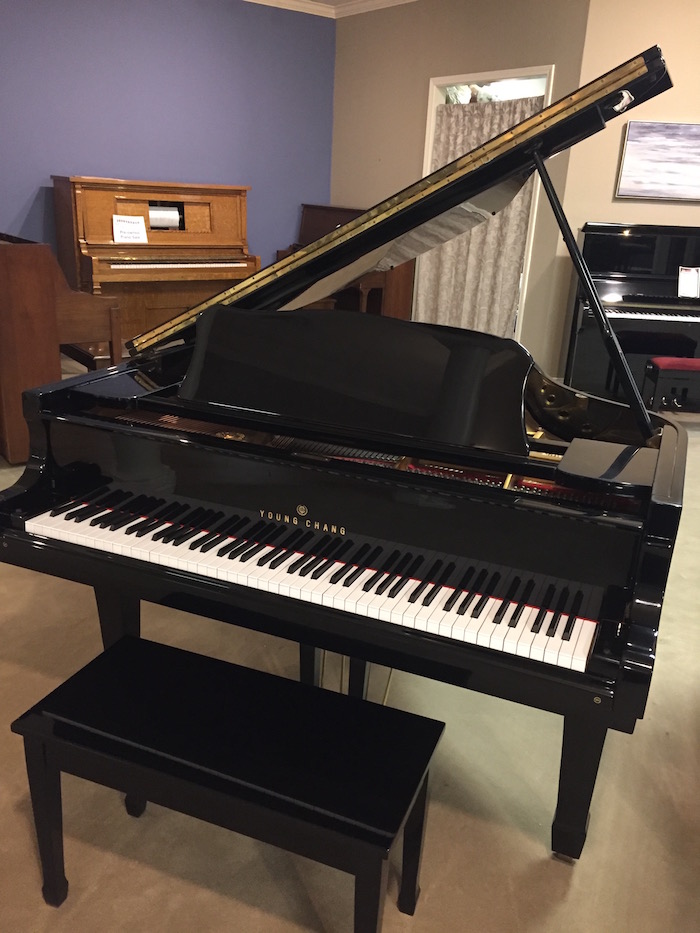

Steinway's Essex pianos are all built the same, regardless of price and regardless of size: ESSEX QUALITY IS CONSTANT FROM MODEL TO MODEL. It is worth noting that Essex and Boston pianos are not mass produced. However, our research shows pretty clearly that these companies do not stop at lower labor rates, they go on to strip features and materials out of the pianos to reach the lowest price, but also deliver lower value. These are global companies that mass-produce pianos globally, so of course they are going to seek out ways to deliver better value. Most shoppers we meet have no idea that Yamaha and Kawai make pianos in China, Indonesia, Taiwan, and other places. And all the pianos in that price range are made in Asia. So the question becomes: who makes a better piano in China/Indonesia? However, a large percentage of our customers are first-time buyers and are shopping for pianos in the Essex price range. If you like those pianos and they fit your budget, you should absolutely get one. We never talk anyone out of getting an American-made Steinway or a Japanese-made Boston. We will be the first to agree that the finest pianos in the world are made right here in New York at the Steinway factory. Why would you have to spend over 3X the price of an Essex to get the best strings?įor various reasons, opinion posts on the Internet (some of them over 20 years old) ignore all measures of quality and summarily put down all pianos made in China. Roslau strings? Only found on the most expensive Yamaha available, the YUS5. The cheapest pianos will have very small backposts or no center backposts at all. A cross sectional surface area of 400cm or more provides massive support year after year for the the soundboard's crown and the nearly 40,000lbs of tension from the strings. The CSA is calculated by multiplying the width and depth of a post, times the number of posts, and it is a good indicator of an upright piano's structural integrity. However, the thickness of the individual back posts matters. The Yamaha B2 is certainly affordable, but has 25% of the backframe CSA of the Essex EUP116 and NONE of the premium features! About Backframe Cross Sectional AreaĪ 5-post backframe is the first indicator that a manufacturer has taken the design of a piano seriously. At the same price, Yamaha's P22 is 4" shorter! Is it any wonder schools are switching to Essex? We came to the conclusion that Steinway simply delivers a better value with the Essex brand pianos. About Maple Rim MaterialĪt nearly 2X the price of the Essex EUP-123S the Yamaha U1 is one inch shorter and has HALF THE BACKFRAME cross sectional area (CSA). But this chart shows clearly the components left out altogether.

#YAMAHA VS YOUNG CHANG BABY GRAND PIANO SERIES#
The Yamaha GB1K has none of the premium features found in the higher-priced Yamaha grands, yet the ESSEX EGP-155 has ALL of them!Īt nearly 3X the price, the Yamaha C1X almost delivers all the premium features, but why is soundboard quality and rim material left unspecified? The rim material on the SX series pianos is specified (it ought to be, for the price), which seems to acknowledge maple as a superior wood for rim construction, but rim material is not specified for any other pianos.Īs experts in the field, we cannot imagine the difficulty a shopper might have in trying to compare pianos with Steinway's competitors leaving so many major components unspecified. So what is in the Yamaha that justifies this price? Nothing we can find and nothing over 200 ALL STEINWAY SCHOOLS, that use Boston pianos exclusively in their practice rooms, can find either. More weight means more material and denser material. Why is it priced almost 40% higher? Take a look at the weight of these two pianos: THE BOSTON IS 30 LBS HEAVIER. This is the first model in the Yamaha lineup that has a MAPLE RIM. Let's take a look at the Boston GP-215 and compare it to the Yamaha S6X.


 0 kommentar(er)
0 kommentar(er)
